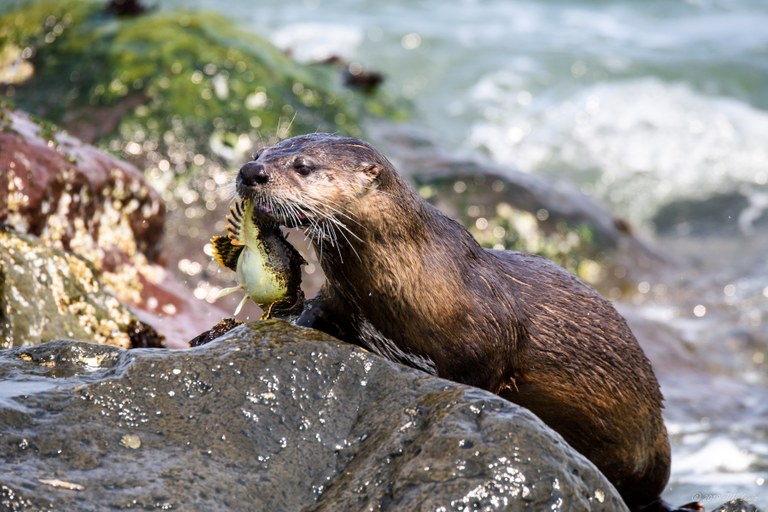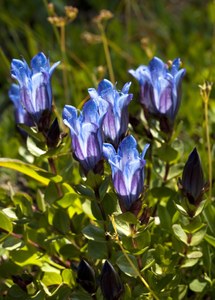Nature on Trail: River Otter and Mountain Bog Gentian
Washington's wild places are teeming with life. Learn a bit more about two local species, the river otter and mountain bog gentian, and where you can find them.
Washington's wild places are teeming with life. Learn a bit more about two local species, the river otter and mountain bog gentian, and where you can find them.

An otter with dinner. Photo by Jeff Lewis.
River otter (Lontra canadensis)
It’s hard not to anthropomorphize river otters. They just look like they’re having so much fun. River otters are well adapted to their watery environments. Their bodies are long and graceful, with short legs, webbed feet and a long tail. Their fur is plush and helps keep them warm, although when wet it appears shiny and slick. They grow up to 4 feet long, including their tails, making them much smaller than their sea otter relatives. They eat a variety of foods, but most of their diet is made up of fish.
Where to see them: River otters live near fresh and salt water across Washington. You can sometimes spot where an otter likes to hang out by slides in mud or snow leading to water. If you’re lucky enough to spot an otter, give them space. Otters can be unpredictable or dangerous, especially if caring for young.

Photo by Delton Young.
Mountain bog gentian (Gentiana calycosa)
Mountain bog gentian is a striking flower — especially if you can catch it in the sunlight. The flowers, which are shaped like a flared funnel, are a deep blue or purple color and tend to bloom in late summer or early fall. The leaves are sturdy and grow directly on the stem of the plant. You’ll usually find it growing together in large clumps. The gentian genus is large — you can find at least one species in every state in the United States. Many species of gentian are used for flavoring in bitters or as medicine.
Where to see them: Mountain bog gentian grows at middle elevations in the mountains of western North America. It prefers wet areas, such as bogs, damp meadows or stream sides. It grows in both the Olympic and Cascade mountains.


Comments